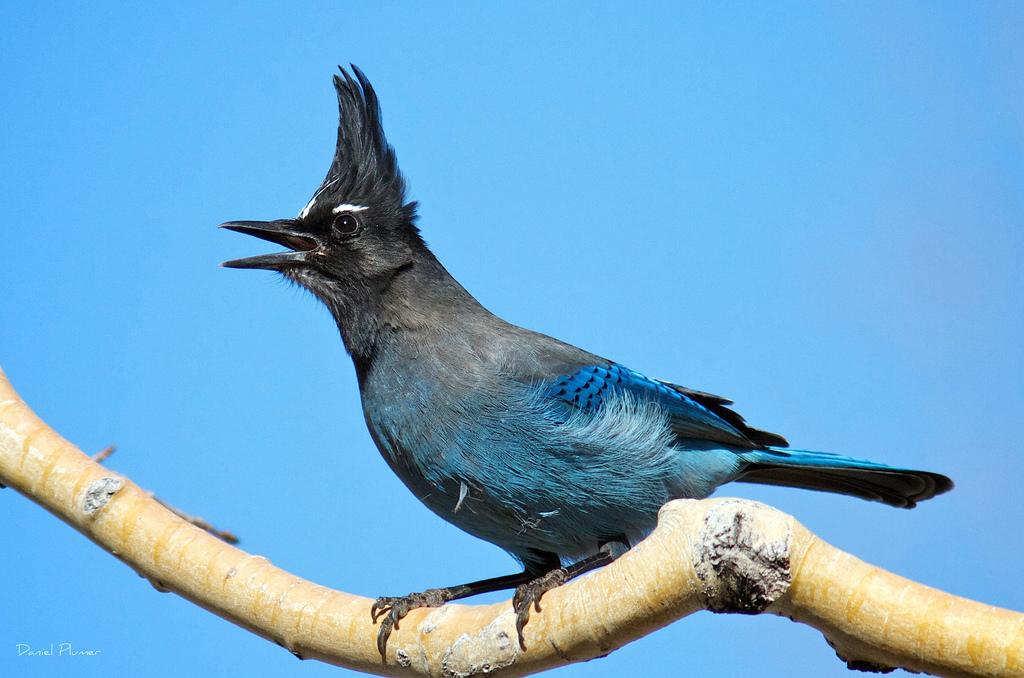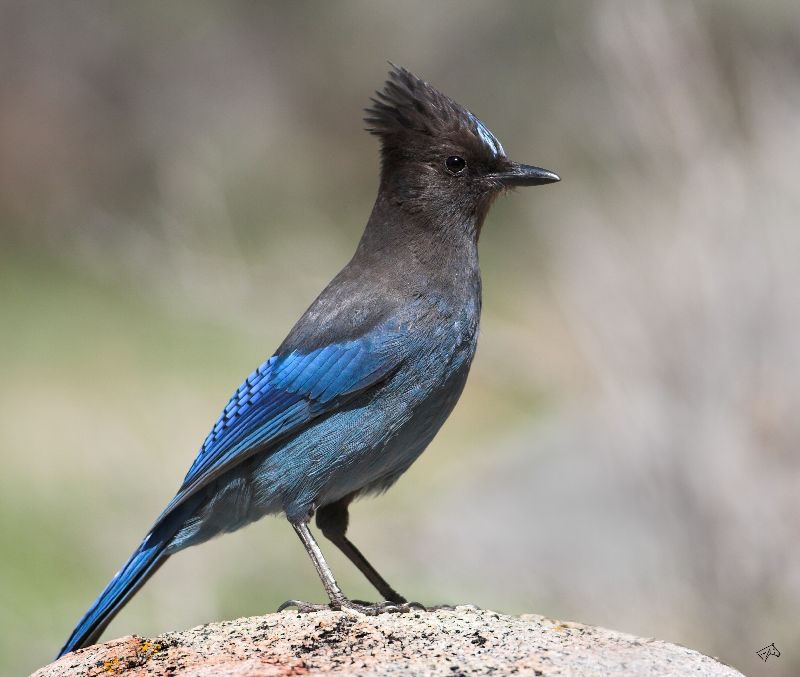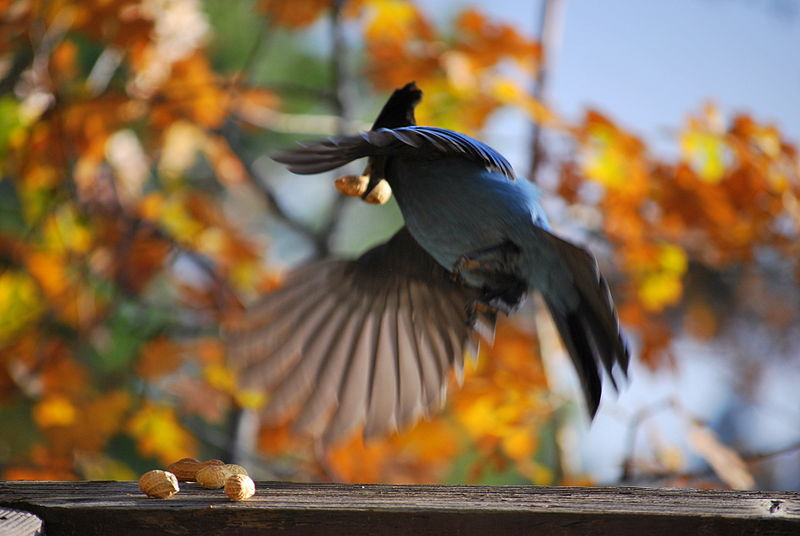Adaptation
Vocalizations
Although Cyanocitta stelleri is a songbird it has one very
interesting adaptation in its capability of producing a wide
range of vocalizations (AAB 2005). The
Steller’s Jay tends to be a very loud vocal in all areas besides
their own nest. A few vocalizations are used as a way of
attracting a mate but Steller’s Jay is also well known for its
mimicking abilities (Greene et al 1998). Steller’s Jay is
able to mimic animals such as squirrels,
cats,
dogs,
loons, chickens, and some mechanical objects (AAB 20 05). They are also able to imitate predators such
as the
Red-tailed Hawk, Red-shouldered Hawk, and Osprey.
Steller’s Jay uses this to clear feeding areas of other birds
(Greene et al. 1998). This gives the Steller’s Jay a clear
advantage when it comes to getting food. Steller’s Jay’s
unique ability of mimicking allows for it to compete effectively
against other birds in the same ecological niche. These
birds have also been known to start the mobbing of predators.
This is a gathering of numerous birds that use vocalizations to
repel the predator (ADW 2001).
05). They are also able to imitate predators such
as the
Red-tailed Hawk, Red-shouldered Hawk, and Osprey.
Steller’s Jay uses this to clear feeding areas of other birds
(Greene et al. 1998). This gives the Steller’s Jay a clear
advantage when it comes to getting food. Steller’s Jay’s
unique ability of mimicking allows for it to compete effectively
against other birds in the same ecological niche. These
birds have also been known to start the mobbing of predators.
This is a gathering of numerous birds that use vocalizations to
repel the predator (ADW 2001).
Spatial Memory
Steller’s Jay have also developed an enhanced spatial memory. This
was a result of a
change in brain morphology caused by demands from the Steller’s Jay’s
life history. The enhanced spatial memory allows for the ability
to cache food. This allows for the long term storage of food and
gives Steller’s Jay an advantage during rough times. It may also
increase reproductive success (Rockwell et al. 2013).
Movement
Like many other birds Cyanocitta stelleri normal way of
movement includes flight and hopping. Steller’s Jay uses its wings
to fly by forcing air underneath the wing to produce lift. The
breast muscles of the jay must also be strong to keep the wings moving
and able to sustain flight (Feather Biology). Steller’s Jay is
able to fly strongly for short distances but is not well equipped to
sustain flight for long distances. Because of this these birds
don’t tend to cross large bodies of water. When traveling on the
ground, Steller’s Jay uses its long legs to hop from place to place.
It also uses this method to move up trees by hopping from branch to
branch (Greene et al 1998). This bird is equipped with four toes,
three of which are located in the front and one flexible in the back
called a hallux. This allows Steller’s Jay to grip and maneuver
tree branches effectively (WWJ 2014).
Adaptation to Humans
Steller’s Jay have a few interesting strategies when it comes to coming
in contact with humans. They have been known to build nests on
buildings, near parks, and campgrounds. Steller’s Jay typically lives on
the edge of forests but they have learned to take advantage of us.
They are often seen sneaking off with unattended picnic food and garbage
(ADW 2001). Steller’s Jay is also frequently seen
at birdfeeders eating various seed mixes.
Back to Habitat Forward to Reproduction

